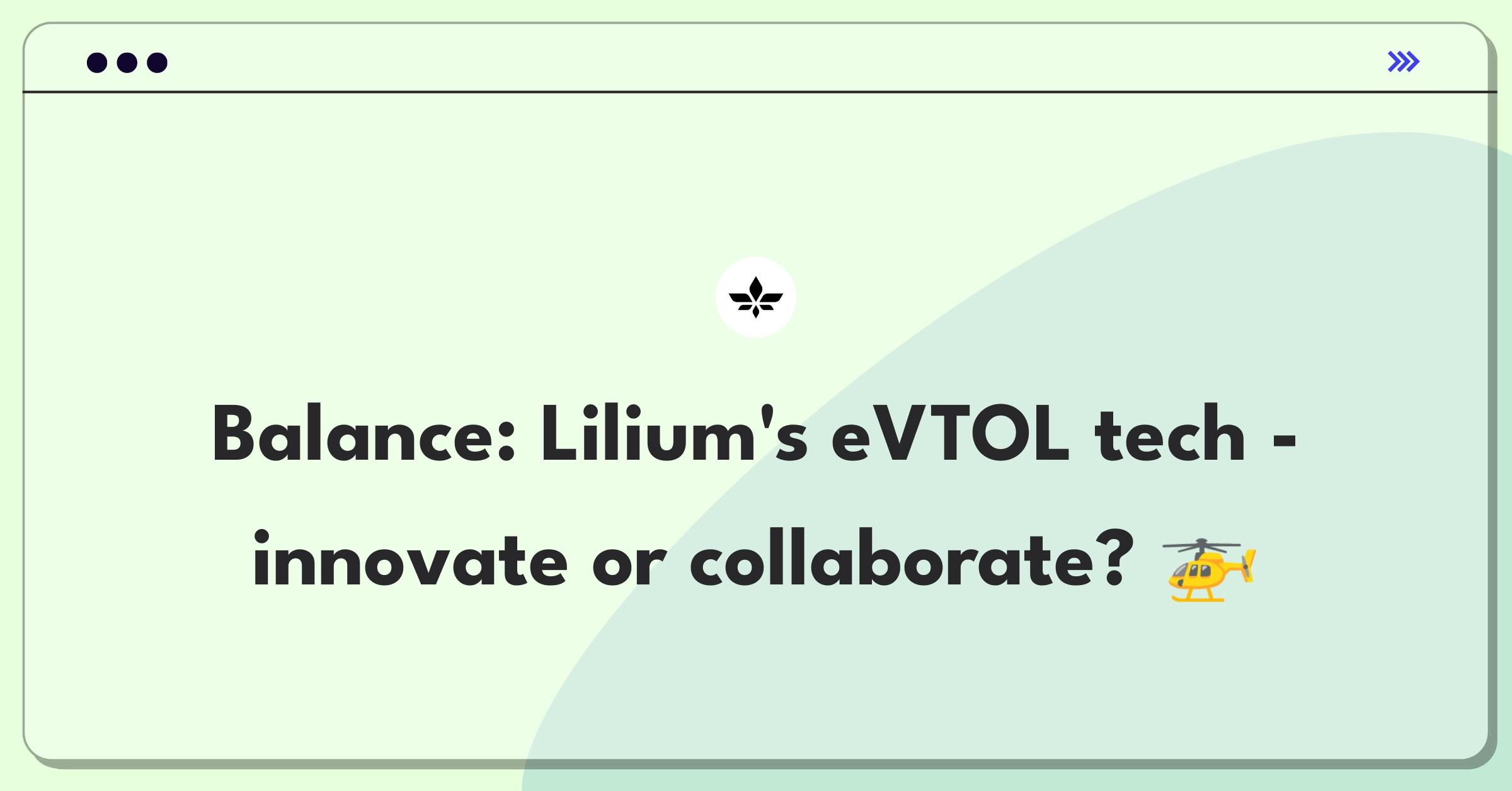Introduction
The key trade-off for Lilium is whether to focus on developing proprietary technology or partner with existing aerospace manufacturers. This decision will significantly impact Lilium's product development strategy, market positioning, and long-term competitiveness in the emerging electric vertical takeoff and landing (eVTOL) industry.
I'll analyze this trade-off by examining the following aspects:
- Clarifying the business context and technical requirements
- Understanding the product and its ecosystem
- Evaluating potential impacts and metrics
- Designing an experiment to test our hypotheses
- Developing a decision framework
- Providing a recommendation with next steps
Analysis Approach
I'd like to start by asking a few clarifying questions to ensure we're aligned on the key factors influencing this decision. This will help me tailor my analysis to Lilium's specific situation and goals.
Step 1
Clarifying Questions (3 minutes)
Why it matters: Helps determine the urgency and potential impact of the decision Expected answer: Late prototype stage, preparing for certification Impact on approach: Would influence the feasibility of developing proprietary technology vs. partnering
Why it matters: Helps prioritize speed vs. control in technology development Expected answer: Aiming for commercial operations within 2-3 years Impact on approach: Might favor partnerships for faster market entry
Why it matters: Ensures the decision aligns with user needs and expectations Expected answer: Safety record, range, noise levels, and operating costs Impact on approach: Would influence the choice between proven technology (partnerships) vs. potentially superior proprietary solutions
Why it matters: Helps assess the feasibility of in-house development vs. the need for external expertise Expected answer: Strong in aerodynamics and flight control, weaker in propulsion and battery technology Impact on approach: Might suggest a hybrid strategy, developing some technologies in-house and partnering for others
Why it matters: Helps determine if we have the capacity for extensive in-house development Expected answer: 60% of budget and 70% of engineering team on technology development Impact on approach: High allocation might favor continued in-house development, while lower allocation could suggest partnering
Subscribe to access the full answer
Monthly Plan
The perfect plan for PMs who are in the final leg of their interview preparation
$99 /month
- Access to 8,000+ PM Questions
- 10 AI resume reviews credits
- Access to company guides
- Basic email support
- Access to community Q&A
Yearly Plan
The ultimate plan for aspiring PMs, SPMs and those preparing for big-tech
$99 $33 /month
- Everything in monthly plan
- Priority queue for AI resume review
- Monthly/Weekly newsletters
- Access to premium features
- Priority response to requested question


.png)